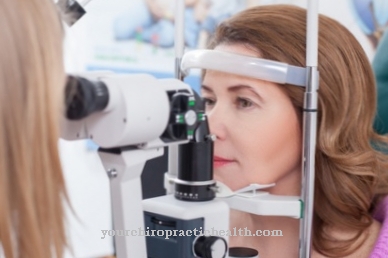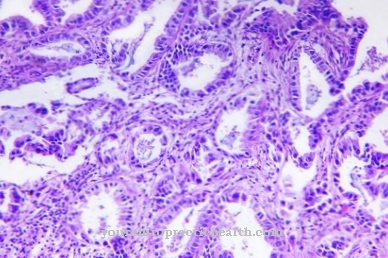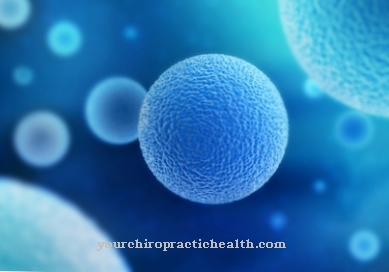The optical coherence tomography (OCT) as a non-invasive imaging method is mainly used in medicine. The different reflection and scattering properties of different fabrics form the basis of this method. As a relatively new method, OCT is currently establishing itself in more and more areas of application.
What is Optical Coherence Tomography?

The physical basis of optical coherence tomography is the creation of an interference pattern when reference waves are superimposed on reflected waves. The decisive factor is the coherence length of the light.
The coherence length represents the maximum difference in transit time between two light beams which, when superimposed, still allows a stable interference pattern to arise. Optical coherence tomography uses light with a short coherence length with the help of an interferometer to determine the distances of scattering materials.
For this purpose, in medicine, the area of the body to be examined is scanned at points. The method allows a good depth investigation due to the high penetration depth (1-3 mm) of the radiation used in the scattering tissue. At the same time, there is also a high axial resolution at high measuring speed. Optical coherence tomography thus represents the optical counterpart of sonography.
Function, effect & goals
The optical coherence tomography method is based on white light interferometry. It uses the superposition of reference light with reflected light to form an interference pattern. The depth profile of a sample can be determined. For medicine, this means examining deeper tissue sections that cannot be reached with conventional microscopy. Two wavelength ranges in particular are of interest for the measurements.
On the one hand, this is the spectral range at a wavelength of 800 nm. This spectral range provides good resolution. On the other hand, light with a wavelength of 1300 nm penetrates particularly deep into the tissue and allows particularly good depth analysis. Today, two main application methods of OCT are used, the time domain OCT systems and the Fourier domain OCT systems. In both systems, the excitation light is split into reference and sample light via an interferometer, whereby interference occurs with the reflected radiation.
By laterally deflecting the sample beam over the examination area, sectional images are recorded, which are merged into an overall recording. The Time Domain OCT system is based on short-coherent, broadband light, which only generates an interference signal when both arm lengths of the interferometer match. The position of the reference mirror must be passed through to determine the backscatter amplitude. Due to the mechanical movement of the mirror, the time required for the display is too high, so that this method is not suitable for fast imaging.
The alternative Fourier Domain OCT method works on the principle of the spectral decomposition of the interfered light. The entire depth information is recorded at the same time and the signal-to-noise ratio is significantly improved. Lasers serve as light sources, which gradually scan the body parts to be examined. The areas of application of optical coherence tomography are primarily in medicine and here particularly in ophthalmology, cancer diagnostics and skin examinations. The different refractive indices at the interfaces of the tissue sections in question are determined via the interference pattern of the reflected light with the reference light and displayed as an image.
In ophthalmology, the fundus is mainly examined. Competing techniques, such as the confocal microscope, cannot adequately image the layered structure of the retina. With other procedures, the human eye is sometimes too stressed. In the field of eye diagnostics in particular, OCT has proven to be very advantageous, especially since contactless measurement also excludes the risk of infection and psychological stress. Currently, new perspectives are opening up for OCT in the field of cardiovascular imaging.
Intravascular optical coherence tomography is based on the use of infrared light. Here the OCT provides information about plaques, dissections, thrombi or stent dimensions. It is also used to characterize morphological changes in blood vessels. In addition to medical applications, optical coherence tomography is increasingly conquering areas of application in materials testing, for monitoring production processes or in quality control.
Risks, side effects & dangers
Optical coherence tomography has many advantages over other methods. It is a non-invasive and contactless procedure. This enables the transmission of infections and the occurrence of psychological stress to be largely avoided. Furthermore, no ionizing radiation is used in OCT.
The electromagnetic radiation used largely corresponds to the frequency ranges that humans are exposed to on a daily basis. Another great advantage of OCT is that the depth resolution does not depend on the transverse resolution. The thin sections used in classic microscopy are no longer necessary because the process is based on purely optical reflection. The large penetration depth of the radiation used enables microscopic images to be generated in living tissue.
The operating principle of the method is very selective, so that even very small signals can be detected and assigned to a certain depth. This is why OCT is particularly suitable for examining light-sensitive tissue. Limitations of the use of OCT result from the wavelength-dependent penetration depth of the electromagnetic radiation and the bandwidth-dependent resolution. However, broadband lasers have been developed since 1996, which have advanced depth resolution even further.
Since the development of UHR-OCT (ultra-high resolution OCT), it has even been possible to display subcellular structures in human cancer cells. Since OCT is still a very young procedure, not all possibilities have been exhausted. Optical coherence tomography is attractive because it does not pose a health risk, has a very high resolution and is very fast.














.jpg)













